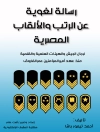This ground-breaking, interdisciplinary volume provides an overdue assessment of how infertility has been understood, treated and experienced in different times and places. It brings together scholars from disciplines including history, literature, psychology, philosophy, and the social sciences to create the first large-scale review of recent research on the history of infertility. Through exploring an unparalleled range of chronological periods and geographical regions, it dev...
Содержание
1. Introduction. Infertility in History: Approaches, Contexts and Perspectives; Tracey Loughran and Gayle Davis.- Section 1: Defining the ‘Problem’: Perspectives on Inf...
Об авторе
Gayle Davis is Senior Lecturer in the History of Medicine at the University of Edinburgh, UK, and has published extensively in the social history of medicine since c.1880....












